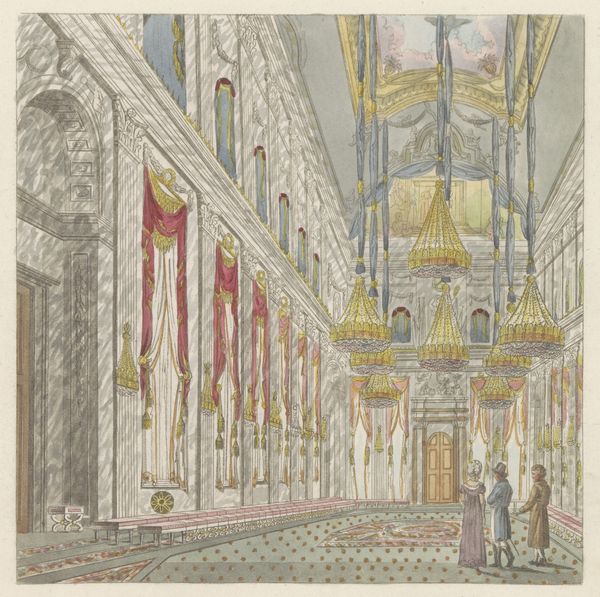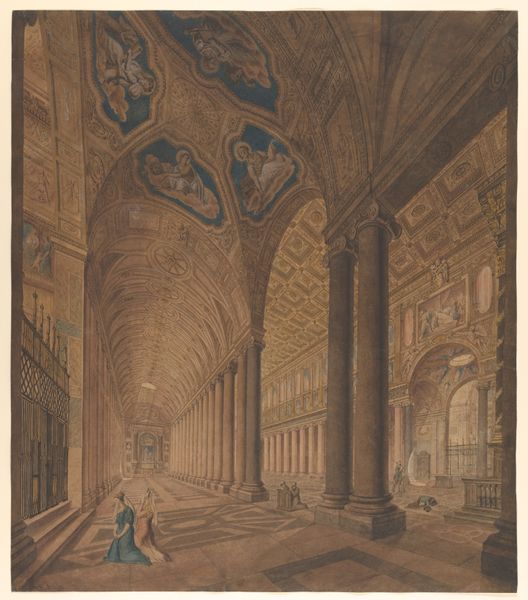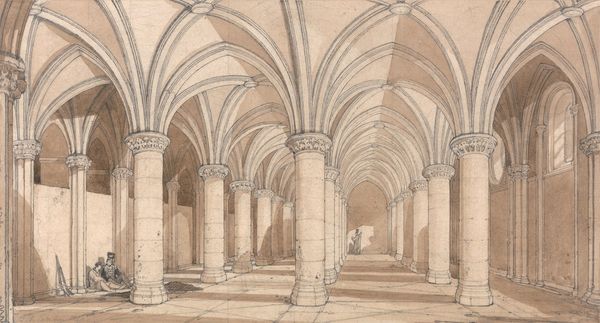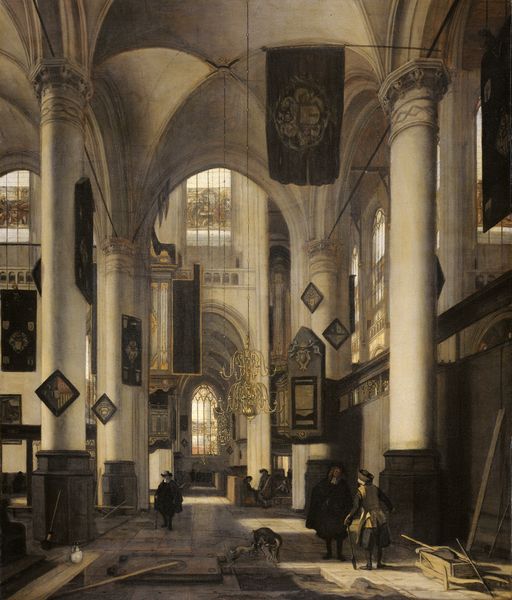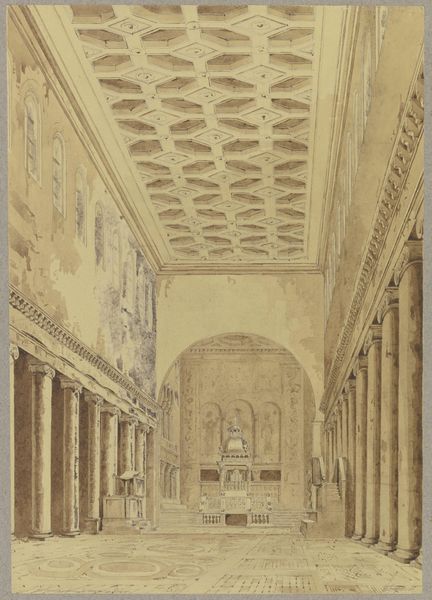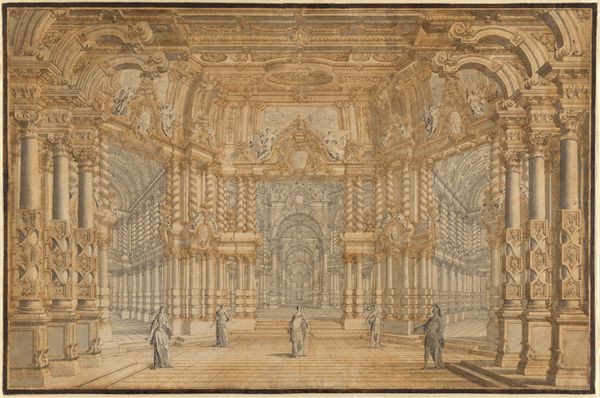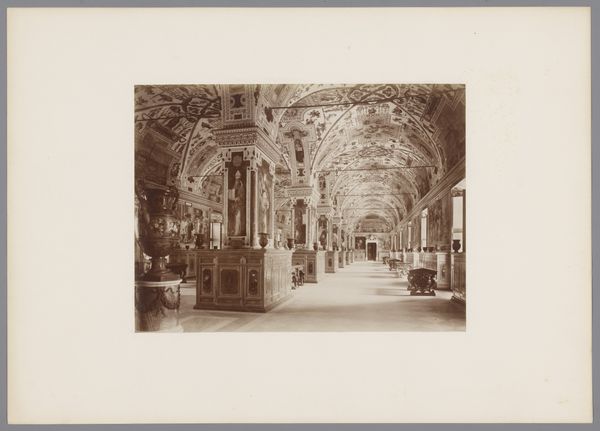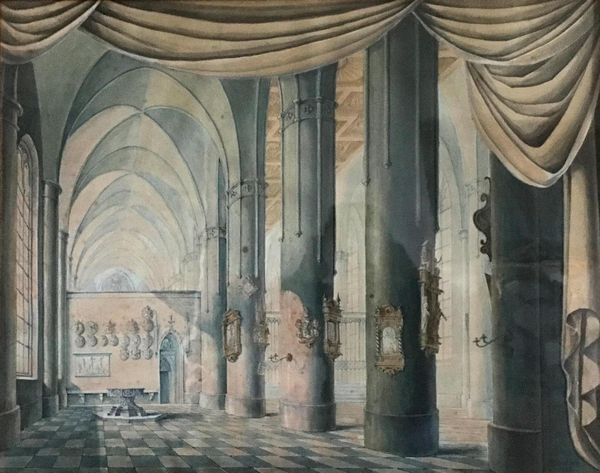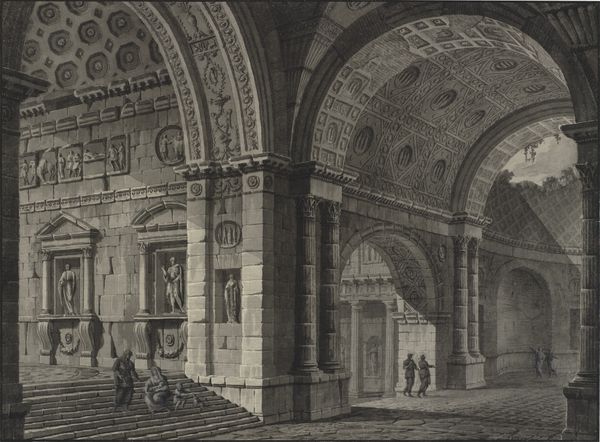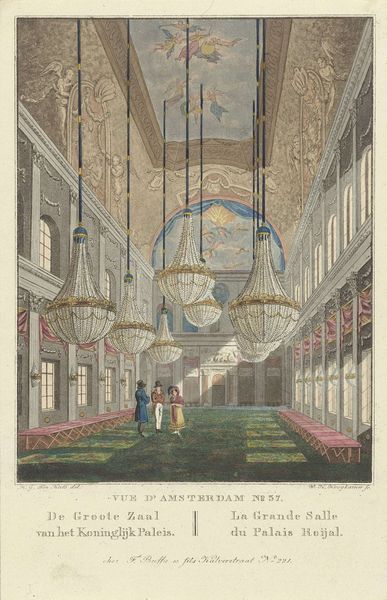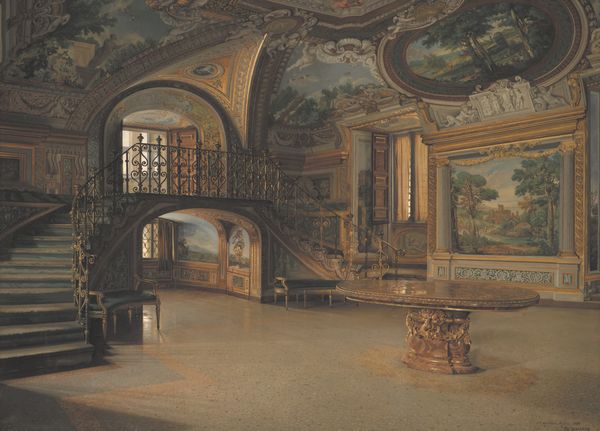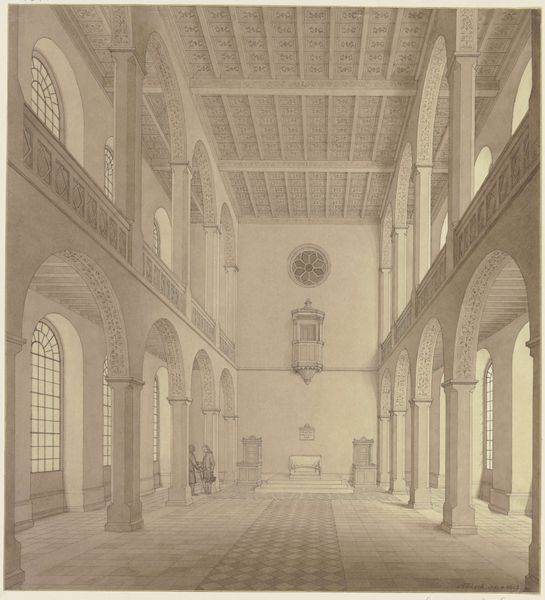
tempera, painting, fresco, architecture
#
tempera
#
painting
#
landscape
#
perspective
#
fresco
#
geometric
#
history-painting
#
italian-renaissance
#
architecture
Dimensions: 57 x 78.5 cm
Copyright: Public domain
Editor: This painting is titled "Campo Santo of Pisa" by Vincenzo Cabianca and it looks like it's rendered in tempera, possibly with fresco elements. The repetition of arches and columns create an interesting rhythm, and there are all these stone sarcophagi that run along the base. It seems concerned with structure. What's your read of this artwork? Curator: Considering a materialist approach, the focus should be on the construction, and purpose of that construction. Tempera, fresco - these are traditional methods. We see here architecture serving the purpose of a grand history painting. These traditional materials meet labor and devotional intent: the place stores remains and commemorates. But look at that repeated architectural element and perspectival use - it almost anticipates industrial-age serial production. Editor: I see what you mean. There is that almost rhythmic regularity to the columns, punctuated by those little bursts of sunlight coming in. What can you tell me about its physical location as subject matter, because it feels significant. Curator: The Campo Santo itself, in Pisa, Italy, began in the 13th century, so its initial construction involved immense resources, both material and human. Its very purpose was to house sacred earth from Golgotha, a deliberate act of religious appropriation tied to access and devotion, further enriched later during the Italian Renaissance by local artists through its paintings. Think of the cost involved to decorate each sarcophagus. So, tell me, what could that labour have otherwise achieved? Editor: Well, that really changes my understanding of the space depicted in the painting. All of the marble, all of the paintings and detail that go into building that space are diverting all of these resources and artistic labor to something…else. Curator: Exactly. A true testament to a grand gesture, though ultimately finite. Editor: So the piece asks us to consider the weight of historical processes of wealth, resources, and labor practices? It is amazing to consider how "landscape" and "architecture" get transformed. Curator: Precisely. We moved far beyond visual pleasure, towards critical examination.
Comments
No comments
Be the first to comment and join the conversation on the ultimate creative platform.


